William Henry Materials & Artistry
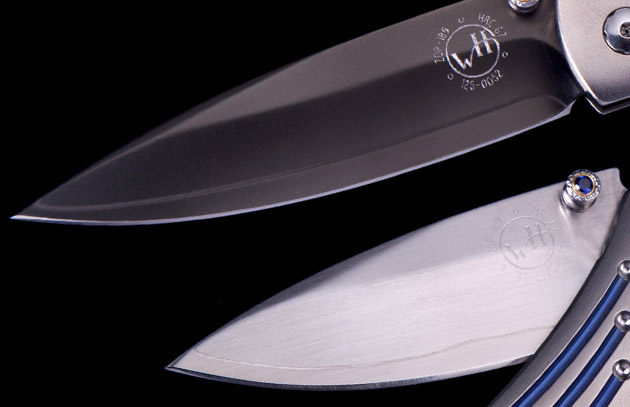
ZDP-189
William Henry worked closely with partners in Japan to develop a laminate that captures a ‘core’ center layer of ZDP-189 (HRC 67) within softer layers of 420J2 stainless steel for their blades. The ZDP creates the razor sharp edge, while the softer layers offer tensile strength and support. The layers are revealed in heat treating and polishing, showing an elegant seam in the blade that mimics the traditional ‘temper lines’ seen on Samurai swords.
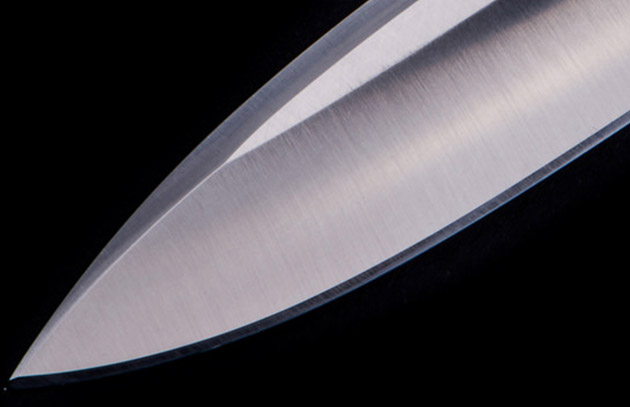
S35 VN STEEL
S35VN is a quality stainless steel manufactured by Crucible Industries’. The letters “S,” “V,” and “N” refer to the terms “stainless,” vanadium,” and “niobium,” respectively. S35VN steel is composed of 1.4 percent carbon, 14 percent chromium, 3 percent vanadium, 2 percent molybdenum, and .5 percent niobium. Carbon is the most essential element in the hardness of steel; the higher the carbon content, the harder the knife is. When combined with other alloys including chromium and vanadium, carbides are formed which are harder than just the carbon alone.
Despite the high level of toughness in this steel, which usually diminishes a steel’s wear resistance, this steel does not lose out on a superior resistance to wear and chipping. Combined with carbon, the niobium carbides make the steel more effective in providing resistance to wear and edge chipping than if it were more dependent on chromium, which is the case with many other steels. The resulting edge holding ability of this steel is remarkable, ensuring S35VN steel to be a long lasting one.
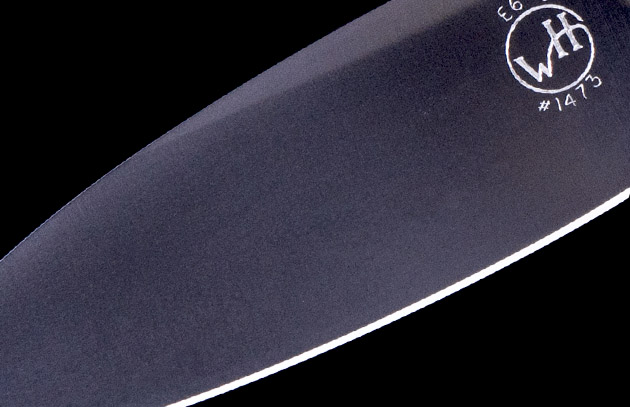
BLACK COATED D2 STEEL
D2 is one of the finest tool steels in the world, heralded for toughness, resilience, and sharpness. This blade is hand-crafted from German D2, tempered to HRC 60-62 for optimum performance. This polished blade is coated with a molecular bond of Tungsten Carbide for superlative wear resistance.
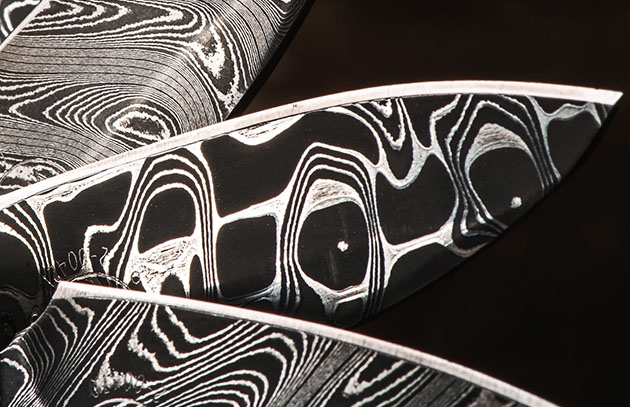
HAND-FORGED DAMASCUS
Damascus steel was a term used by several Western cultures from the Medieval period onward to describe a type of steel created in India and used in sword making from about 300 BC to 1700 AD. These swords were characterized by distinctive patterns of banding and mottling reminiscent of flowing water. Such blades were reputed to be not only tough and resistant to shattering, but capable of being honed to a sharp and resilient edge. William Henry’s damascus is made is made from several types of steel welded together to form a billet.
The patterns vary depending on how the damascus artist works the billet. The billet is drawn out and folded until the desired number of layers are formed. William Henry damascus billets are forged with a minimum of 300 layers. William Henry works with a handful of the very best damascus artists/forgers in the U.S.
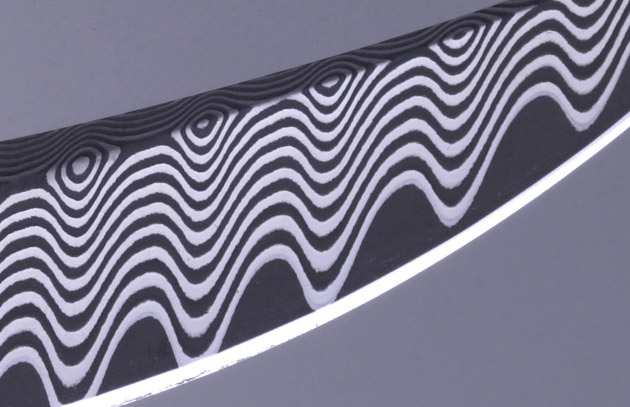
‘WAVE’ DAMASCUS WITH ZDP-189
William Henry’s (patent pending) Wave Damascus features a ZDP-189 core (HRC 67) clad with alternating layers of stainless steel and nickel silver. The billet, 45 layers in all, is patterned with a custom die to create the undulating waves that emerge across the bevels of the blade. This material can be dark-etched for contrast, or etched and re-polished for a more subtle pattern.
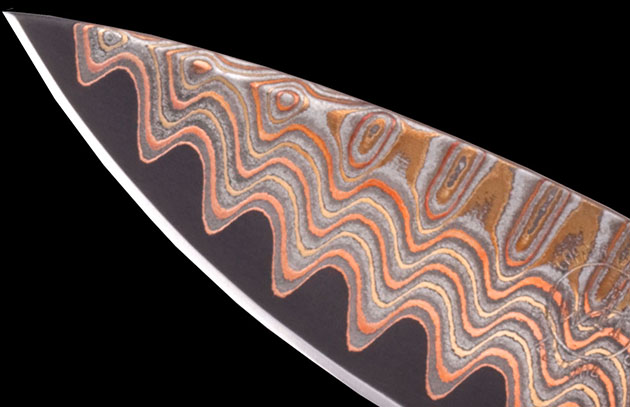
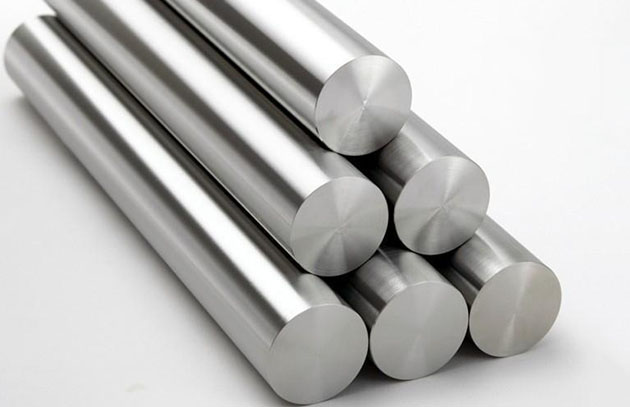
TITANIUM
Titanium is a low density, strong, lustrous, corrosion-resistant (including sea water, aqua regia, and chlorine) metal with a silver color. It was discovered in Great Britain by William Gregor in 1791, and named by Martin Heinrich Klaproth for the Titans of Greek mythology.
William Henry uses only aerospace-grade titanium alloy for their frames, clips, and micro-fasteners. Called 6Al/4V, it is titanium with a little aluminum and vanadium added in for additional toughness and tensile strength.
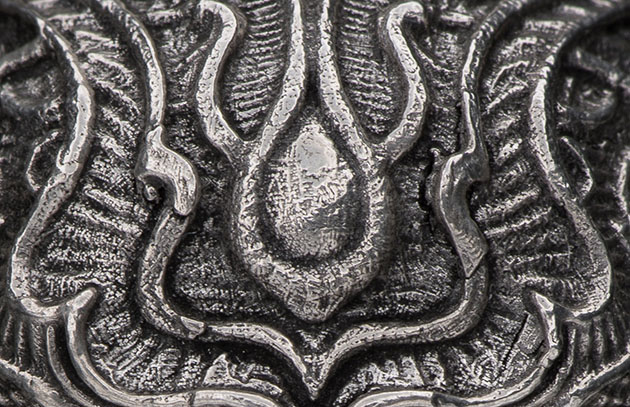
STERLING SILVER
Highly lustrous, harder than gold, sterling silver is one of the world’s oldest and most celebrated precious metals. William Henry uses state-of-the-art techniques to sculpt it and finely cast it for their collections.
Sterling silver is an alloy of silver containing 92.5% by mass of silver and usually 7.5% by mass of copper. The sterling silver standard has a minimum millesimal fineness of 925. The sterling alloy originated in continental Europe and was being used for commerce as early as the 12th century in the area that is now northern Germany. William Henry uses the latest state-of-the-art casting equipment to create mesmerizing pieces that are often considered par with their hand-carved work.
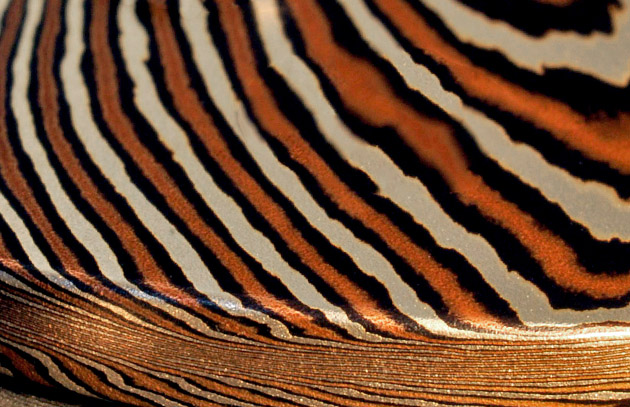
MOKUME GANE
Mokume gane was developed in the 1600s in Japan, allegedly by an Akita prefecture metalsmith named Denbei Shoami (1651 to 1728). He used the mokume gane technique to dress up samurai swords.
The mokume gane technique involves fusing several layers of different metals, and artistically exposing sections of lower layers. The metal is often made to display a pattern that mimics wood grain. A variety of metals can be used to give different arrays of coloration. Layers of metal are pressed together and fused with heat. The forged layers are carved to expose lower layers and are then pressed again. The carving and pressing is repeated to develop the pattern.
Today, some of the finest mokume in the world is made here in the USA, and William Henry’s mokume is generally made with copper, brass, and nickel silver in either a 45 or 89 layer billet, forged and patterned by hand. Their patterns come in a variety of elegant design including Twist, Reverse Twist, and Raindrop.
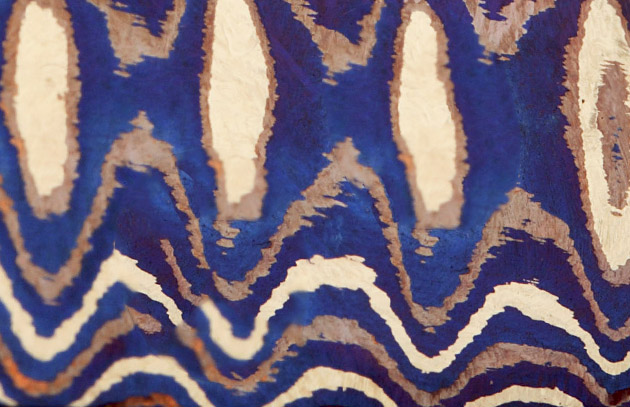
WAVE MOKUME
Wave Mokume is another William Henry exclusive material(patent pending) that fuses traditional metal forging with modern fabricating technology. This alloy features copper, stainless steel, and pure iron in a 55 layer billet patterned with an undulating wave. When highly polished and heat colored, the iron layers take on deep browns, purples, or blues according to temperature and quenching technique.
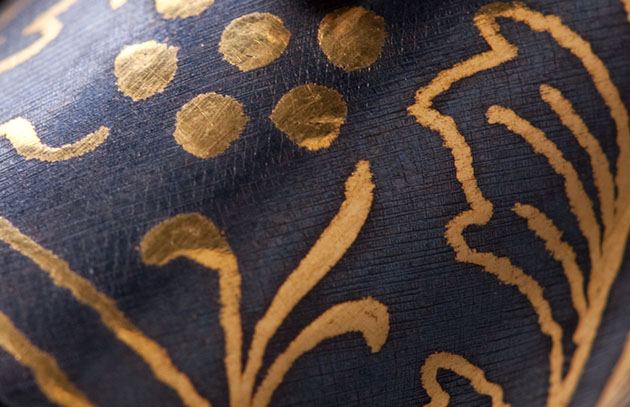
KOFTGARI
Koftgari is the name for fine gold (and/or silver) patterns inlayed into parkerized steel. This ancient Indian technique, done entirely by hand, involves creating a very fine cross-hatch grid in the steel and then burnishing 24K gold (and/or silver) into a pattern that is bound by the cross-hatch. Parkerizing involves soaking the steel in a boiling solution of salts to oxidize the steel a deep brown/blue. Beautiful and timeless, koftgari is nearly a lost art.
William Henry’s koftgari comes from two small villages in India, home of the very few Indian artisans that still master this technique.
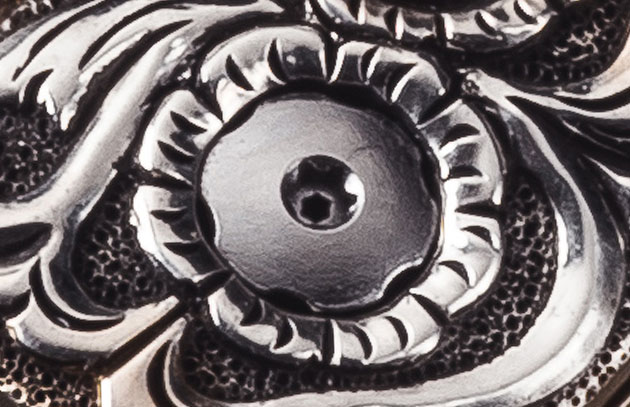
CARVED STERLING SILVER
Carved Silver is done by hand with chisels and rotary tools. William Henry works with the finest silversmiths to create elaborate and durable carvings in sterling silver. In many cases, they use colored sapphires and other precious stones, set in 18K gold bezels, to further decorate these masterful carvings.
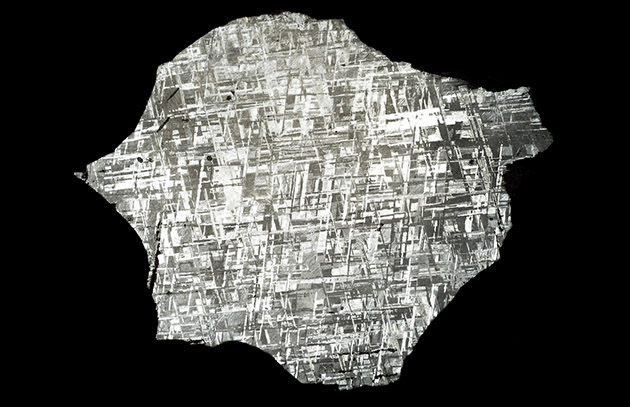
METEORITE
William Henry uses beautiful sections of the Gibeon Meteorite, which fell in prehistoric times in Namibia. It was named after the nearest town: Gibeon. The fragments of the meteorite in the strewn field are dispersed over an elliptical area 171 miles long and 62 miles wide; it was discovered by the local Nama people and used by them to make tools and weapons. In 1836 the English captain J. E. Alexander collected samples of the meteorite and sent them to London. There John Herschel analyzed them and confirmed for the first time the extraterrestrial nature of the material.
Gibeon meteorites are composed of an iron-nickel alloy containing significant amounts of cobalt and phosphorus. The crystal structure of this meteorite provides a fine example of the Widmanstätten patterns: these figures of long nickel-iron crystals are of extraterrestrial origin, and cannot occur naturally on earth.
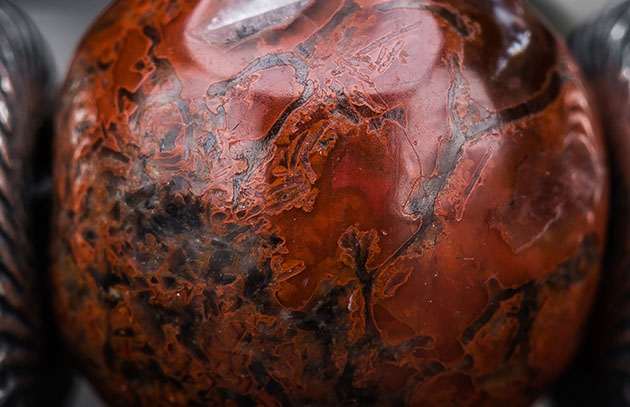
FOSSIL DINOSAUR BONE
Dinosaur bone is probably the most exotic of William Henry’s fossil materials – the fossil comes from a 100 million year-old Apatosaurus. Found and sourced in Utah, dinosaur bone offers the possibility of owning one of the most ancient zoological testaments of the planet. This permineralized material has a characteristic dark red grain, we resin-stabilize each piece and use an impact-resistant backing to protect the material during processing.
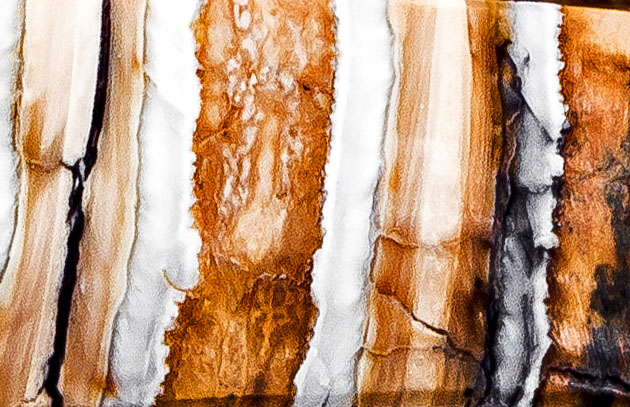
FOSSIL MAMMOTH TOOTH
From a woolly mammoth that walked the Earth at least 10,000 years ago. Modern humans coexisted with woolly mammoths during the Upper Paleolithic period when they entered Europe from Africa between 30,000 and 40,000 years ago. Prior to this, Neanderthals had coexisted with mammoths during the Middle Paleolithic and up to that time. Woolly mammoths were very important to Ice Age humans, and their survival may have depended on these animals in some areas. The woolly mammoth is the next most depicted animal in Ice Age art after horses and bison, and these images were produced up to 11,500 years ago. Today, more than five hundred depictions of woolly mammoths are known, in media ranging from carvings and cave paintings located in 46 caves in Russia, France and Spain, to sculptures and engravings made from different materials.
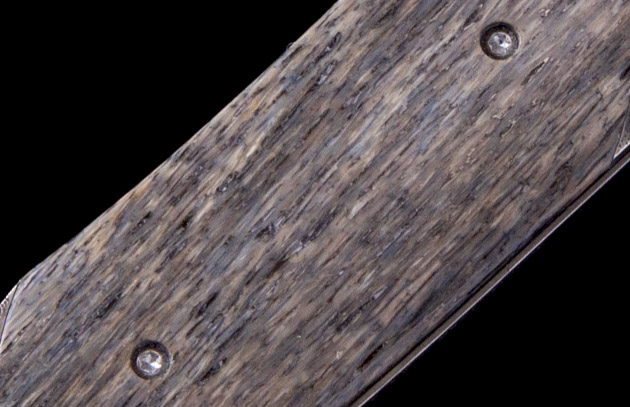
FOSSIL MAMMOTH BONE
From a Woolly Mammoth that walked the Earth at least 10,000 years ago. Modern humans coexisted with woolly mammoths during the Upper Paleolithic period when they entered Europe from Africa between 30,000 and 40,000 years ago. Prior to this, Neanderthals had coexisted with mammoths during the Middle Paleolithic and up to that time. Woolly mammoths were very important to Ice Age humans, and their survival may have depended on these animals in some areas.
The woolly mammoth is the next most depicted animal in Ice Age art after horses and bison, and these images were produced up to 11,500 years ago. Today, more than five hundred depictions of woolly mammoths are known, in media ranging from carvings and cave paintings located in 46 caves in Russia, France and Spain, to sculptures and engravings made from different materials.
William Henry’s fossil Mammoth bone is harvested in Alaska and Siberia. It is a rare and mesmerizing material, a living testimony of the dawn of Mankind.
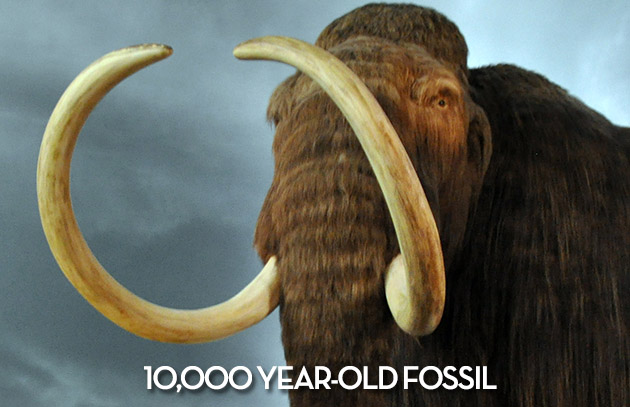
FOSSIL MAMMOTH TUSK
Literally the ring section of the fossil tusk of a woolly mammoth that walked the Earth at least 10,000 years ago. Modern humans coexisted with woolly mammoths during the Upper Paleolithic period when they entered Europe from Africa between 30,000 and 40,000 years ago. Prior to this, Neanderthals had coexisted with mammoths during the Middle Paleolithic and up to that time. Woolly mammoths were very important to Ice Age humans, and their survival may have depended on these animals in some areas.
The woolly mammoth is the next most depicted animal in Ice Age art after horses and bison, and these images were produced between 35 and 11,500 years ago. Today, more than five hundred depictions of woolly mammoths are known, in media ranging from carvings and cave paintings located in 46 caves in Russia, France and Spain, to sculptures and engravings made from different materials.
William Henry’s fossil mammoth tusk is harvested in Alaska and Siberia, often from underwater. It is a rare and mesmerizing material, a living testimony of the dawn of Mankind.
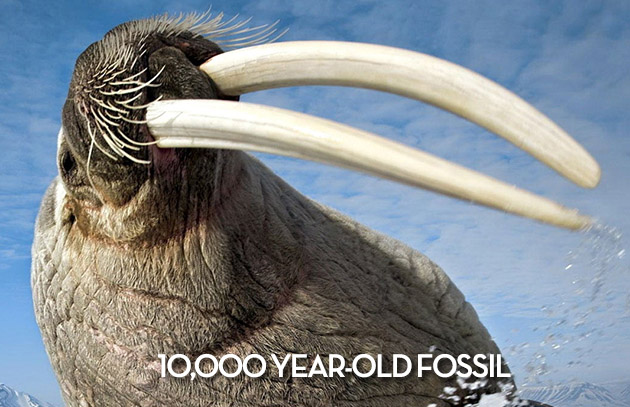
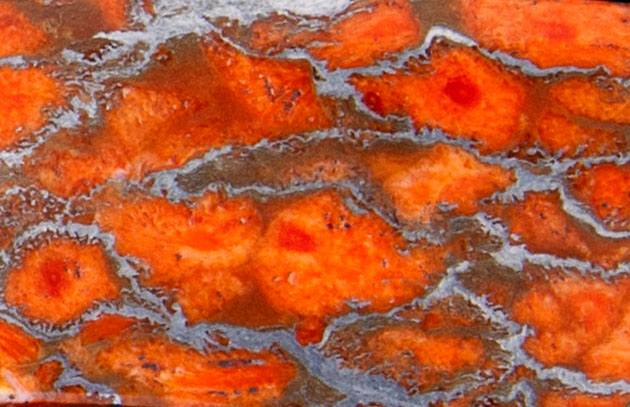
APPLE CORAL
Apple coral is part of the species of corals known as melithaea sponge, which is commonly found on the ocean floors around the waters of Taiwan, Indonesia and southern China. The destruction of coral reefs around the world led to a global ban on coral mining and collecting in 1992, but apple coral was not included. The United States has placed a ban on shipping coral in and out of the country, but there is no ban on the melithaea sponge corals.
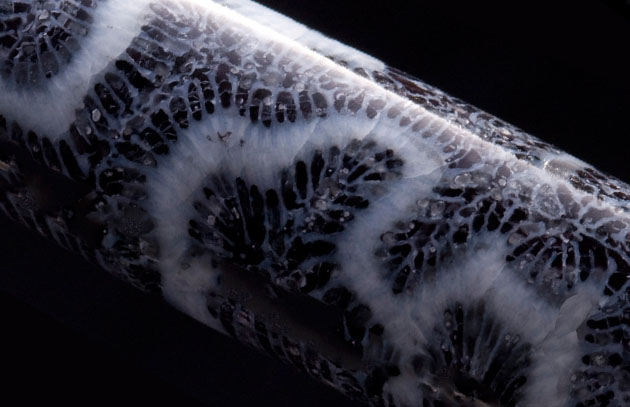
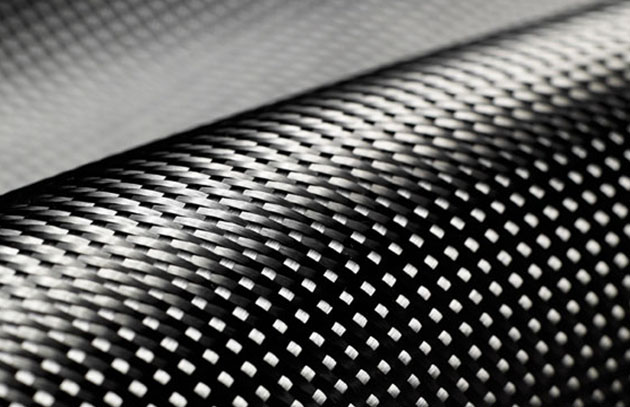
CARBON FIBER
Carbon fiber is a material consisting of microscopic fibers composed mostly of carbon atoms. The carbon atoms are bonded together in crystals that are more or less aligned parallel to the long axis of the fiber. The crystal alignment gives the fiber high strength-to-volume ratio. Several thousand carbon fibers are bundled together to form a tow, which may be used by itself or woven into a fabric.
Carbon fiber’s properties, such as high stiffness, high tensile strength, low weight, high chemical resistance, high temperature tolerance and low thermal expansion, make them very popular in aerospace, civil engineering, military, competition sports. William Henry uses the highest grade, and beautifully textured carbon fiber for its collections of knives, money clips, and jewelry.
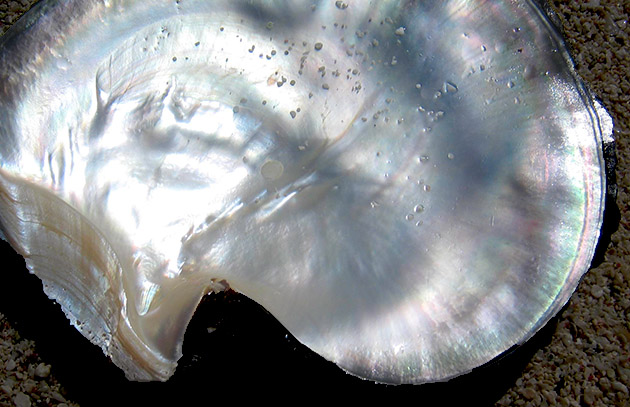
MOTHER OF PEARL
Mother of pearl is the common name for iridescent nacre, a blend of minerals that are secreted by oysters and other mollusks and deposited inside their shells. William Henry uses premium mother of pearl material sourced directly from suppliers in Australia, selected for maximum color and figure.
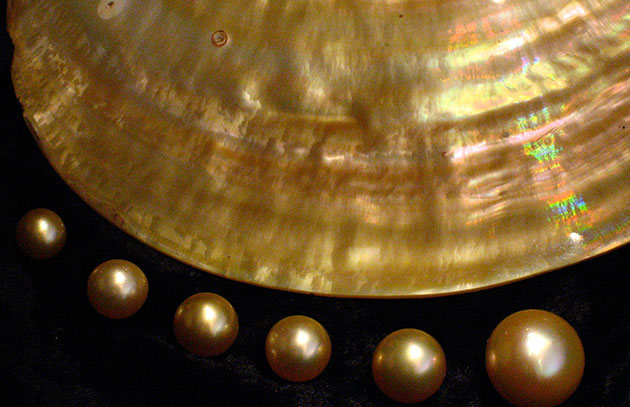
GOLDLIP MOTHER OF PEARL
Goldlip mother of pearl is scientifically the same as white mother of pearl only that Gold is taken from the reverse side of the shell. Good quality dark Gold shells come from the waters surrounding the Philippines and parts of Indonesia. The gold section is a thin lip – like a veneer – of natural color that is carefully selected and worked to yield the deepest possible gold tones.
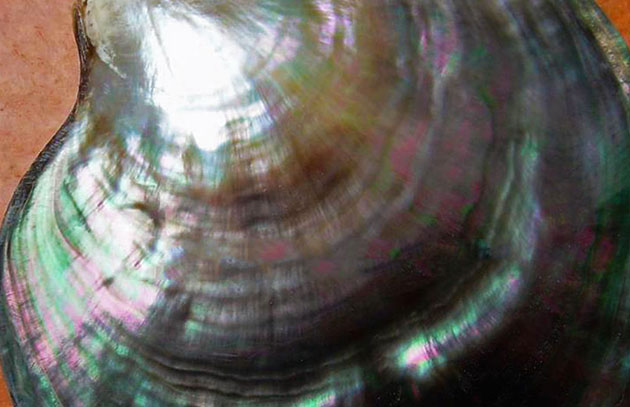
BLACKLIP MOTHER OF PEARL
Blacklip mother of pearl is one of the most exclusive pearls in the world. It comes from small shells found in French Polynesia around Tahiti and its Archipelagos. Just under the exterior bark of the shell is where the real beauty of the Blacklip shell lies. A nice pair of Blacklip will have every color of the rainbow in its iridescent black background. We source our Blacklip directly from shell farmers in Tahiti to ensure sustainability and top quality material.
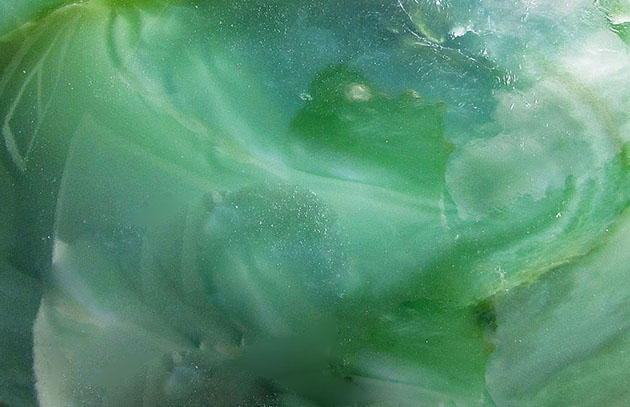
JADE
With its beauty and wide-ranging expressiveness, jade has held a special attraction for mankind for almost 7,000 years. Still today, this gem is regarded as a symbol of the good, the beautiful and the precious. It embodies the Confucian virtues of wisdom, justice, compassion, modesty and courage, yet it also symbolizes the female-erotic.
It comes in many fine nuances of green, but also in shades of white, grey, black, yellow, and orange and in delicate violet tones. Only in the very finest jade is the color evenly distributed.
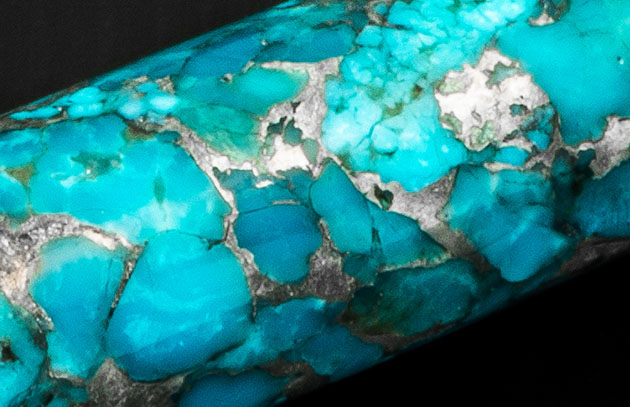
TURQUOISE
The Kingman Turquoise Mine in Arizona is one of the oldest and highest producing Turquoise Mines in America. It was originally discovered by prehistoric Indians well over 1,000 years ago. Kingman Turquoise is known for its beautiful sky blue color and produces many variations of blue Turquoise. William Henry’s Zinc-Matrix Turquoise is made with Kingman Turquoise infused with zinc, creating a striking contrast between the soft blues of the Turquoise and the shiny, contemporary look of the metal.
